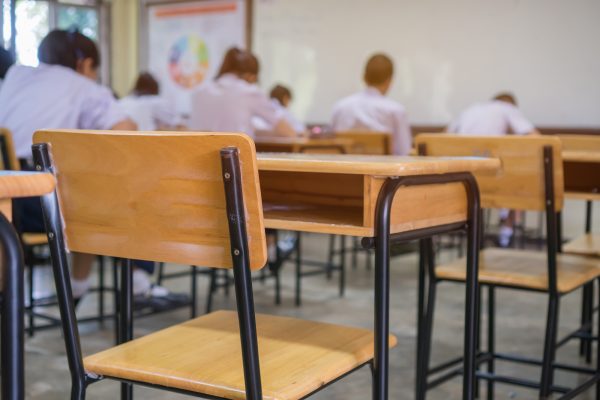USDA free lunch extension leads to an increase of students eating at school
The USDA’s decision to offer all students free lunches during the 2021-2022 school year has coincided with an increase in the number of students eating lunch at school.
September 25, 2021
In April of 2021, the USDA announced its decision to offer all students free lunches during the 2021-2022 school year. This extension greatly expands upon the existing National School Lunch Program, colloquially known as “free and reduced lunches”.
The introduction of free meals for all students has correlated with a significantly higher number of students eating meals at Edina Public Schools (EPS). Alex Turnbull, the dietician for the EPS Food Service Department, has seen this increase firsthand at Edina High School. “Before the pandemic, regularly, we were hitting about 600 complete meals a day…now we’re doing over 700,” she said. According to Turnbull, Edina elementary schools have seen a nearly twofold increase in the meals served during breakfast as well.
This increase in volume brings complications for the Food Service Department, as it contends with both labor shortages and supply chain issues. EPS is currently short one to three staff members at each school—at EHS, this has resulted in the closure of the salad bar and deli. Disruptions in the food products supply chain have been exacerbated by the reopening of restaurants and suppliers’ lack of employees, another product of the ongoing labor shortage. This has meant frequent substitutions and quick changes to the menu.
“It’s been challenging, but [the USDA extension has] allowed us to do what we can without worrying if kids have to pay for meals, and families that are struggling right now,” Turnbull said.
Despite these challenges, schools have benefited from the USDA’s lunch extension. This year, they are reimbursed for each meal as opposed to only those that previously qualified as a part of the NSLP. However, the Food Service Department still urges families to complete the Application for Educational Benefits, so they can have access to benefits like those included with the Electronic Benefit Transfer. The EBT, while not currently available, allows students who qualify to receive discounts on testing, instruments, electronics, and more.
Proponents of free lunches at schools advocate for the USDA’s extension to continue indefinitely. One such supporter is Holly Daniels, volunteer coordinator for Every Meal. Every Meal is a community-funded organization that provides students with nutritious food to take home over the weekend. “Even with the Free and Reduced Lunch Program, people still fall through the cracks. People experience shame and lunch debt and stigma,” Daniels said.
Although the NSLP reimburses school districts for qualifying students’ meals, eligibility in the program is dependent on the income level of students’ families. Many students fail to meet the requirements or don’t seek out the application out of embarrassment.
EPS attempts to address this problem by supplementing reimbursement waivers from the USDA with funds raised by the Edina MealFund. During the pandemic, the organization raised over $75,000 to help provide free breakfasts, lunches, and dinners for students.
“Many families that face food insecurity know that at least they will have a good meal at school. During the pandemic that meal was not possible so the efforts of bringing food to families’ homes and allowing for pick up was critical,” Representative Heather Edelson, one of the organizers of the MealFund, said.
Even during a normal school year, students who receive free lunch may still lack adequate food on the weekends. Nonprofits play a role in providing this food to students; Every Meal currently operates at all of Edina’s elementary schools. “Every Meal is still there to fill in the gaps when children are not at school to receive the food,” Daniels said.
According to Daniels, Every Meal experienced a surge of donations during the pandemic. Despite this, she is concerned about the potential for future food insecurity brought on by the ongoing effects of the pandemic.
“In 2008, when there was that recession, food insecurity spiked for all populations. It just went up, increased for all of the different demographics. And it actually took 12 years, until 2020, to get back down to the pre-recession of food insecurity,” she said. “And when we think about the effects of the pandemic on people with food insecurity, we know it’s going to be a long recovery.”
Although it’s uncertain whether the USDA will continue the extension of free lunches beyond this school year, some policymakers are pursuing other legislative solutions. “I have been working on an initiative that would give free breakfast to all students in high poverty school districts that would be mostly funded through the federal government. Some states have done this and they have actually seen their grades, participation, and behaviors improve,” Edelson said. Regardless, the USDA extension has made a significant impact on schools. “Students have more access to food than they have ever before,” Turnbull said.









